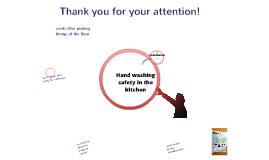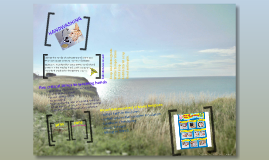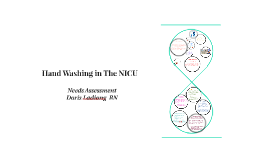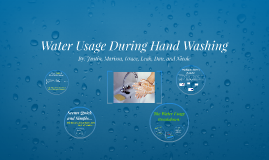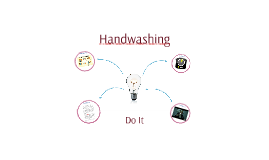HANDWASHING
Transcript: More than 32,000 patients/year 15 different wards 5 medical wards 5 surgical wards 2 emergency department wards 2 ICU wards 1 bone marrow transplant ward Over 520 hours Soap & Water: Wet hands thoroughly Apply soap & vigorously rub hands together for at least 15 seconds Rinse thoroughly Avoid hot water (decreases risk of dermatitis) Dry hands with paper towel Turn off water using paper towel Alcohol-Based Hand Sanitizer: Apply to palm of one hand or one "pump" Vigorously rub hands together, including fingernails for 15 seconds Allow hands to dry Purpose: Hand hygiene is the most important control measure to reduce the transmission of organisms to patients and personnel Education & Compliance: Patients should receive literature and education about hand hygiene when admitted to the hospital Education is conducted annually for all staff Alcohol hand sanitizers are widely available and visible in hospital setting Dispensers/sinks in inappropriate locations Lack of accountability Failure to stress the importance Ineffective/insufficient education Hands full of equipment/supplies Belief it is not necessary if gloves are worn Inattentiveness/distractions 1 in 20 people get hospital inquired infections Hand hygiene includes hand washing with plain soap and water, use of antiseptic hand rubs including waterless alcohol-based products, or surgical hand antiseptics Compliance rates are below 50% and as low as 41% when gloves are involved. Study in ICU Rubbing palm to palm fingers enlaced Palm over dorsum fingers interlaced Back of fingers to opposing palms fingers interlocked Rotational rubbing of thumb clasped in opposite palm Rotational rubbing backwards & forwards with clasped fingers of opposite hands Study of Handwashing Over Shifts References Included 279 patients in Canada in 3 multi-organ transplant units over an 8-month period. Electronic monitoring sensors were installed on all soap & hand sanitizer dispensers 30% washed their hands after toileting 40% washed their hands during meal time 3% washed hands when using the kitchen on unit 3% washed hands when entering the hospital 7% washed hands when leaving the hospital (AARC Times) HANDWASHING Results ORMC Hand Hygiene Protocol ORMC Protocol 5 Moments: Before touching patient After touching patient After touching surroundings After body fluid exposure risk Before clean/aseptic procedures Included 4,157 caregivers at 35 U.S. hospitals over 3 years Results: Compliance dropped an average of 8.7% from the beginning of the 12 hour shift to the end of the shift Higher work intensity led to lower hand-washing rates Longer times off throughout shifts led to increase in compliance (AARC Times) Studied staff in a 20-bed ICU at a large university hospital over 10 days and included 47,694 hand hygiene opportunities. Automated hand hygiene monitoring systems were installed and detected whether staff washed hands prior to entering the patient's room and estimated location of other staff in vicinity. Results: When staff was alone - 20.85% compliance When other staff was nearby - 27.9% compliance However, the monitoring system didn't record the dispensing systems inside the room (AACN Bold Voices) Factors that Contribute to Poor Compliance Indications: At the start of a shift Before & after patient contact When C.diff is suspected or confirmed When moving from a contaminated body site to a clean site during care Before inserting or handling invasive devices After contact with inanimate objects After removing gloves After sneezing, coughing or wiping nose Before eating After using the restroom 6 Individual Steps: Procedure Patient Study Hand Hygiene Suffers as the Shift Wears On. (2015). AARC Times. 39 (2), 65. Patients Need to Wash Up, Too. (2015). AARC Times. 39 (1), 47. Peer Pressure May Influence Hand Hygiene Compliance. (2014). AACN Bold Voices. 6 (12), 15. Tschudin-Sutter, S., Sepulci, D., Dangel, M., Schuhmacher, H., & Wildmer, A.F. (2015). Compliance with the World Health Organization Hand Hygiene Technique: A Prospective Observational Study. Infection Control & Hospital Epidemiology. 36 (4), 482-483. Orange Regional Medical Center and All Outpatient Facilities Policy/Procedure FACTS Hand hygiene is a top priority in the prevention of cross infection and healthcare associated infections HAIs result in: Increased morbidity and mortality Prolonged hospital stays Increased health care costs Antibiotic resistance World Health Organization (WHO) Hand Hygiene ORMC Protocol Indications Hand hygiene was performed in 93.2% of opportunities (2,480 out of 2,662) ICU - 100% Medical wards - 94% Surgical wards - 90% Technique Compliance with all 6 steps was 8.5% Majority adhered to 2-3 steps Workers younger than 25 years old showed higher compliance Compliance decreased with increase duration of employment (Tschudin-Sutter, S., Sepulci, D., Dangel, M., Schuhmacher, H., & Wildmer, A.F) Study at University Hospital Basel (Switzerland) Health-Care Associated Infections 62 ECG bpm






